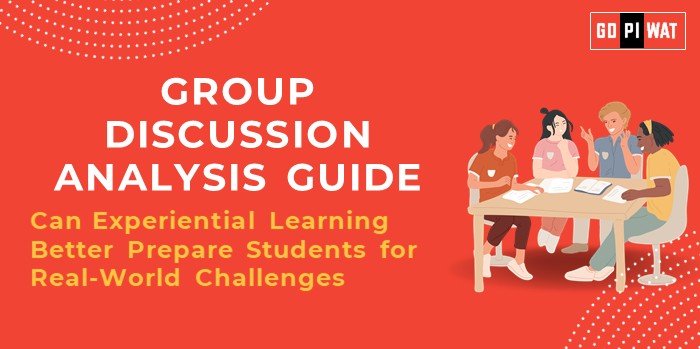📋 Can Experiential Learning Better Prepare Students for Real-World Challenges?
🌐 Introduction to Experiential Learning
Opening Context: Experiential learning, a teaching methodology emphasizing hands-on experience and reflective practice, has gained traction in education as an alternative to traditional rote learning methods. Advocates argue it aligns more closely with real-world expectations.
Topic Background: Rooted in the theories of John Dewey and David Kolb, experiential learning promotes active engagement in real-world contexts. Popular methods include internships, simulations, case studies, and service-learning. Many top B-schools now integrate these approaches into their curriculum.
📊 Quick Facts and Key Statistics
– 💡 Skill Retention: Experiential learning boosts skill retention by 70% compared to traditional methods (Source: Harvard Business Review, 2023).
– 🌟 Real-World Readiness: Employers rank experiential graduates 45% higher on workplace readiness (LinkedIn, 2023).
– 🎓 Internship Participation: Over 85% of MBA students in leading programs complete at least one internship.
👥 Stakeholders and Their Roles
- 🏫 Educational Institutions: Integrate experiential elements into curricula.
- 📚 Students: Actively engage and reflect on learning experiences.
- 💼 Employers: Provide internships, live projects, and mentorship.
- ⚖️ Government Bodies: Promote experiential learning through policy incentives.
🏆 Achievements and Challenges
✨ Achievements:
- ✅ Skill Development: Enhanced problem-solving and leadership skills among students.
- 🤝 Industry Linkages: Strengthened academia-industry collaborations.
- 🌍 Global Recognition: Universities adopting experiential models show higher global employability rankings.
⚠️ Challenges:
- 📖 Standardization Issues: Lack of uniformity in learning outcomes across institutions.
- 🛑 Access Gaps: Resource-intensive, often inaccessible to smaller institutions or underprivileged students.
- 📊 Assessment Difficulties: Measuring qualitative learning outcomes remains complex.
🌍 Global Comparisons
USA: Extensive integration of experiential learning, supported by federal initiatives like work-study programs.
Finland: Early adoption in primary education with a focus on holistic, hands-on learning.
Case Studies: India’s IIM Ahmedabad: Introduced Rural Immersion Programs to foster real-world exposure.
MIT Sloan: Action Learning Labs, pairing students with global organizations.
💡 Structured Arguments for Discussion
✔️ Supporting Stance:
“Experiential learning bridges the gap between theoretical education and industry requirements, producing job-ready graduates.”
❌ Opposing Stance:
“Resource constraints and lack of standardization can lead to inconsistencies in experiential learning outcomes.”
⚖️ Balanced Perspective:
“While experiential learning enhances practical skills, ensuring inclusivity and consistency is essential for broader impact.”
🧠 Effective Discussion Approaches
📝 Opening Approaches:
- 📊 Use a statistic: “75% of global B-schools emphasize experiential learning, highlighting its importance.”
- ❓ Pose a question: “Is our current education system equipping students for real-world challenges?”
🛠️ Counter-Argument Handling:
- “Acknowledge limitations and suggest solutions like government or industry collaboration for standardization.”
🔍 Strategic Analysis of Strengths and Weaknesses
💪 Strengths:
- ✔️ High engagement, improved skills, and industry relevance.
❌ Weaknesses:
- 🚧 High costs and limited reach.
🌟 Opportunities:
- 📈 Leveraging EdTech for wider access.
⚡ Threats:
- ❓ Risk of unstructured implementation.
📈 Connecting with B-School Applications
Real-World Applications: Topics for finance, HR, and operations projects, like analyzing experiential learning ROI.
Sample Interview Questions:
- 💬 “How does experiential learning prepare students for leadership roles?”
- 💬 “Evaluate its potential to address skill gaps in emerging economies.”
Insights for B-School Students:
- 🌟 Internships and case competitions provide key learning opportunities.
- 📚 Focus on measurable outcomes for projects tied to real-world applications.


